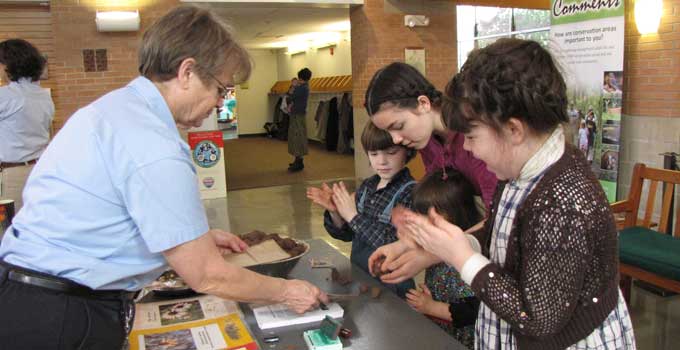 A volunteer on Saturday waived plant husks and airy white puffs flew from them, each attached to seeds in a demonstration of urban butterfly gardening.
A volunteer on Saturday waived plant husks and airy white puffs flew from them, each attached to seeds in a demonstration of urban butterfly gardening.
Those milkweed pods thrive in childhood memories but are now far more rare elsewhere.
And that is bad news for monarch butteries, who lay their eggs on milkweed and as caterpillars feed only on it.
An event Saturday at the Anita B. Gorman Discovery Center, 4750 Troost, instructed people on how to garden for butterflies and other wildlife.
People left there with seeds for common milkweed or swamp milkweed, along with clay seed balls with other wildflower seeds.
People wanting to get started in butterfly gardening can also always gather seeds from stalks of wildflowers planted at the center.
Midwestern farmers have destroyed much of the milkweed with herbicides. It used to grow between rows of things like corn and soybeans, but genetically modified food plants now survive the massive use of herbicides.
On Saturday, volunteer Carol Smith demonstrated a basket of milkweed husks.
Many are now unfamiliar with it, she said, but “it used to be everywhere in the ditches.”
The monarchs use all kinds of milkweed, and the orange-flowered butterfly milkweed is more attractive and less invasive than the common variety.
But it blooms later, Smith said, so a mixture of milkweeds would provide help for butterflies that arrive earlier.
She also recommends planting fennel and dill for caterpillars of swallowtails and other butterflies to eat, she said.
Other plants that bloom or seed at different times are things like various kinds of coneflowers, little bluestem and plains coreopsis.
Among butterfly nectar sources in the category of wildflowers 20-30 inches tall are black-eyed Susan, cardinal flower, indian Paintbrush, Ohio horsemint, rose verbena and shining blue star.
In a time of soaring water bills, they also generally need less water and effort than common grass.



Who’s talking